Martin Anda, with his wife and some friends, bought a piece of land in Fremantle, Western Australia, that was part of an existing One Planet Living certified eco-village residential precinct. The land had a north facing orientation to help capture the Australian winter sunlight.
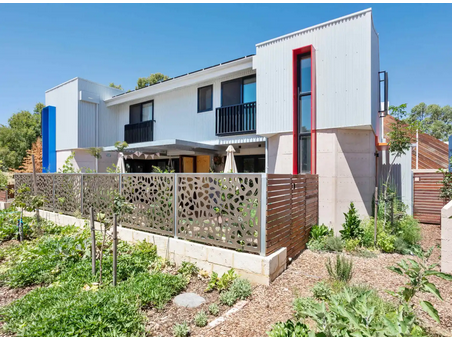 Martin lives with his wife in one 60 square meter (646 sq. ft.) one-bedroom apartment and another couple live in the other apartment. They have an edible garden on the property which provides the couple and their neighbors with fresh herbs all year round.
Martin lives with his wife in one 60 square meter (646 sq. ft.) one-bedroom apartment and another couple live in the other apartment. They have an edible garden on the property which provides the couple and their neighbors with fresh herbs all year round.
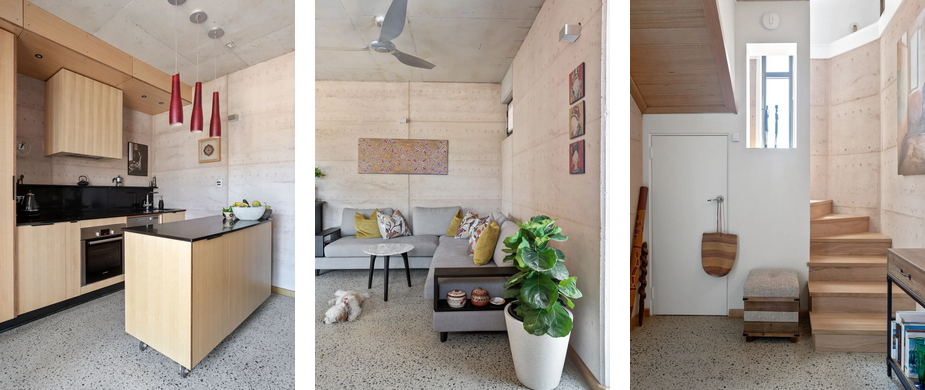 Working with architect Richard Hammond, the group chose to go for rammed earth walls and recycled materials. After a traditional Indigenous smoking ceremony to bless the land, sustainable home builder Craig Bailey of Ecovision Homes set to work on putting the vision to reality.
Working with architect Richard Hammond, the group chose to go for rammed earth walls and recycled materials. After a traditional Indigenous smoking ceremony to bless the land, sustainable home builder Craig Bailey of Ecovision Homes set to work on putting the vision to reality.
Unlike brick manufacturing, rammed earth doesn’t require firing, which means no greenhouse gas emissions. “Rammed earth has been used for thousands of years… It’s not like bricks. You construct it by pouring it in from the top. It’s a premium to do a rammed earth wall – as it’s used architecturally as a rustic natural finish,” said Craig.
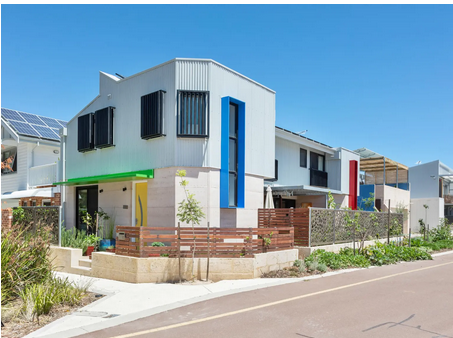 The use of passive solar reaps a savings of approximately $1500 per year. “In the house I used to live in before, the bills were enormous… Now we have a heat pump running on solar, so it’s a lot less. I believe it’s around half the price.” Martin says his number one piece of advice to all home builders or buyers is to orientate their home for passive solar. “That is the best thing to do to achieve sustainability at lowest cost and return on investment.”
The use of passive solar reaps a savings of approximately $1500 per year. “In the house I used to live in before, the bills were enormous… Now we have a heat pump running on solar, so it’s a lot less. I believe it’s around half the price.” Martin says his number one piece of advice to all home builders or buyers is to orientate their home for passive solar. “That is the best thing to do to achieve sustainability at lowest cost and return on investment.”
“In Perth, the breezes come from the south-west, so you need windows from that side to let ventilation through, but shaded enough to reduce the heat load.”
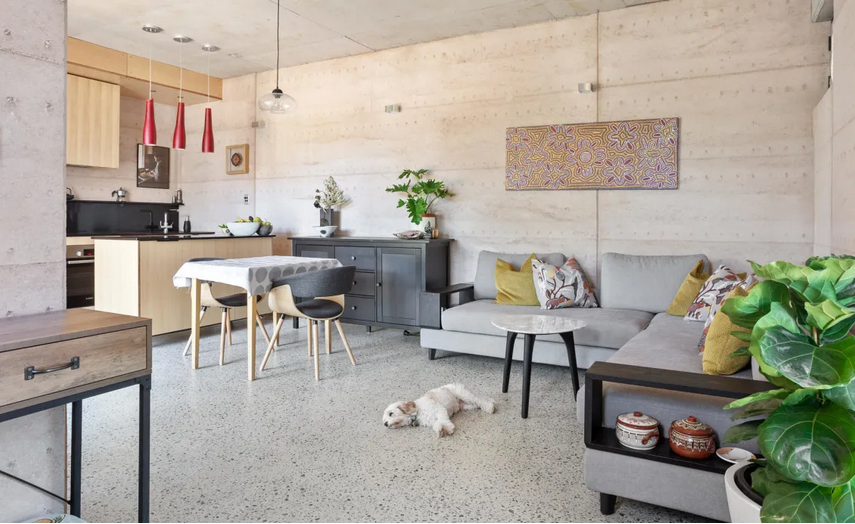 Aside from rammed earth, other sustainable materials used in the design included thermally broken double glazed windows, recycled timber, and other reused materials. Martin says that people considering building their own sustainable home need to “think seriously about materials of construction and where they’re coming from”.
Aside from rammed earth, other sustainable materials used in the design included thermally broken double glazed windows, recycled timber, and other reused materials. Martin says that people considering building their own sustainable home need to “think seriously about materials of construction and where they’re coming from”.
The home has a 5.5 kilowatt PV system and a 5000 litre underground rainwater storage tank. The airtight house design is complemented by an emphasis on natural cross-ventilation, natural light and plants for air filtration.
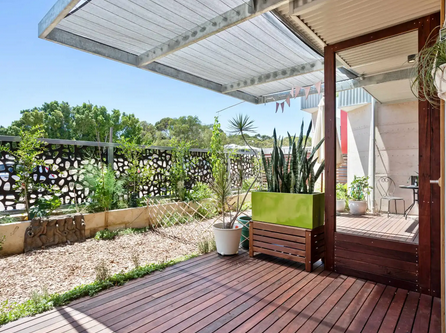 The couple keeps fruit trees, tomatoes, lettuce, sweet potatoes, leeks, and a worm farm to top it all off.
The couple keeps fruit trees, tomatoes, lettuce, sweet potatoes, leeks, and a worm farm to top it all off.
Builder Craig says, “One of the biggest myths is that if you incorporate sustainability into your home, it will cost more. But that’s not true. Sure, you can take it to an incredible degree and it will start costing a lot more – but at a basic level it won’t cost anything extra. Clients want to future-proof. They want a house that will be here in 10 years and won’t degrade in value.”
You can read the original article thegreenlist.com.au

Would earthbags be a good candidate for building townhouses out of? I see the apartment buildings y’all have plans of, but can earthbags be used to construct rowhouses, where there’s 3 or more units attached side by side?
Sure… look at https://naturalbuildingblog.com/multi-family-house-plans/